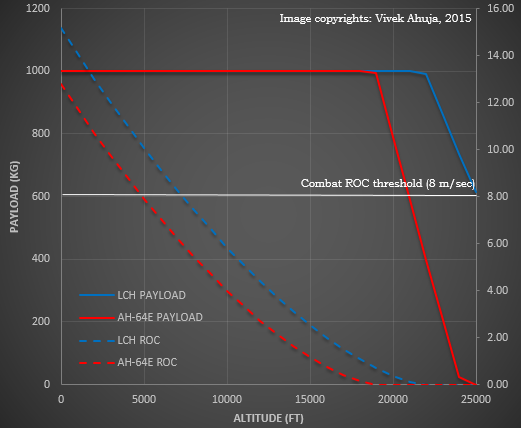indiandefencefan
New Member
- Joined
- Mar 26, 2015
- Messages
- 437
- Likes
- 345

With the new deal to purchase Apache Longbow's, hope LCH would not be left at back burner. It would be nice to see if we could learn from Apache and make LCH the deadliest platform.
thats right but now since most of the weather & flight trails are over all sucsess of LCH depends on its avionicks package which no dought be as good as apaches but needs to be much much better than what we have right now so its complements apaches very well as apache block III/E version has capabilty to interact and share targets and other related information with other air assets in the area for better kill ratio and mission survivabiltyIt's wont be, there's a strong order in place for the IAF and IA.
Dear @shankyz hope you know how much we are infatuated by foreign goods and products. I do agree that Apache is a heavy copter whereas LCH is a light one. Moreover LCH would be mainly used by IA instead of IAF. But you never know what would come across some brilliant brain in top brass. What I fear the most is that they don't start demanding Apache's features in LCH in next couple of months.Don't understand how ppl mix up 2 entirely different categories of helicopters.
LCH , as the name suggests, comes in the lightweight attack category.
Apache , like Mi-35, comes in the heavyweight attack category.
Sent from my iPhone using Tapatalk
apache with latest rotor, gearbox and engine upgrade(which IAF is getting) has almost the same flight cieling to that of LCH but can carry almost more than twice the wepons load as LCH so yes its heavy type but onli in the nameDon't understand how ppl mix up 2 entirely different categories of helicopters.
LCH , as the name suggests, comes in the lightweight attack category.
Apache , like Mi-35, comes in the heavyweight attack category.
Sent from my iPhone using Tapatalk
care to explain this part ? im confused as to whats your pointOnly minor difference being you get 22 apache for 1.4 billion USD and 65 LCH again for 1.4 billion USD.
Congratulations now we have been successfully mugged. Now least request Americans to show some anger towards Pakis.
Specifications (AH-64A/D)[edit]
Weapon loadout of the AH-64 Apache
Data from Jane's Information Group,[51][67] Bishop[281]
- Service ceiling: 21,000 ft (6,400 m) minimum loaded
The Dhruv is capable of flying at high altitudes, as it was an Army requirement for the helicopter to be able operate in the Siachen Glacier and Kashmir regions. In September 2007, the Dhruv Mk.3 was cleared for high-altitude flying in the Siachen Sector after six months of trials.[44][45] In October 2007, a Dhruv Mk.3 flew to an altitude of 27,500 feet (8,400 m) ASL in Siachen.[46] An Indian Army report in 2009 criticised the Dhruv's performance, stating: "The ALH was not able to fly above 5,000m, though the army's requirements stipulated an ability to fly up to 6,500m"; this has been blamed on the TM333 engine. As a consequence the Army had to continue relying on the older Cheetah/Cheetal helicopters to meet the shortfall.[47] The more powerful Shakti engine has since been introduced on the Dhruv Mk.3; on one test it carried 600 kg load to Sonam Post against the Army's requirement of 200 kg.[48] The Indian Army received the first batch of Dhruv Mk.3s during Aero India 2011.[49]
Official figures for maintaining these outposts are put at ~$300 and ~$200 million for India and Pakistan respectively. India built the world's highest helipad on the glacier at Point Sonam, 21,000 feet (6,400 m) above the sea level, to supply its troops. The problems of reinforcing or evacuating the high-altitude ridgeline have led to India's development of the Dhruv Mk III helicopter, powered by the Shakti engine, which was flight-tested to lift and land personnel and stores from the Sonam post, the highest permanently manned post in the world.[45]
For 60 degree Celsius the air conditioner has to be a monster one.In June the LCH undertook low-altitude hot weather trials in the Rajasthan desert, where temperatures were measured at 42 o C outside and near 60 o C inside the helicopter cabin.
http://www.janes.com/article/54079/lch-completes-hot-and-high-trials

| Thread starter | Similar threads | Forum | Replies | Date |
|---|---|---|---|---|
|
|
HAL IJT 'Sitara' : News , Updates & Discussions. | Indian Air Force | 0 | |
|
|
HAL's 'HLFT-42' Fighter Trainer Jet Project | Indian Air Force | 30 | |
|
|
Hal hf 24 marut modelling thread | Members Corner | 66 | |
|
|
HAL Tejas Mk1A VS Chengdu J10 A/B/C BVR-WVR combat scenario. | Defence & Strategy | 10 |
